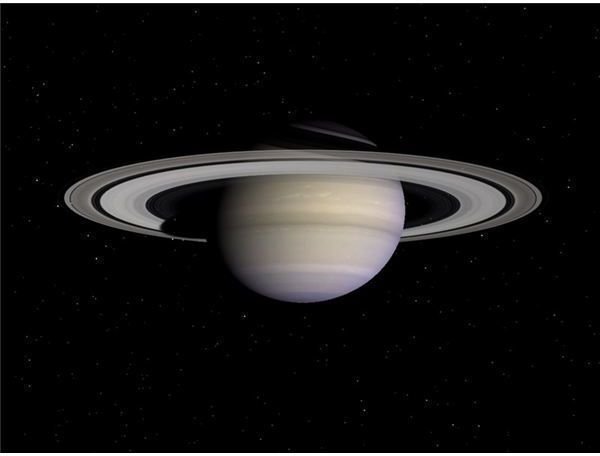Free Astronomy Sky Software That is Free to Download
Free and Full Featured Software
There are a number of astronomy software packages you can download for free. Some of these programs are full-featured, easy to use and possess a rich body of support materials. And yes, they are completely free. Unlike shareware, these are not partial programs or hobbled programs which do only part of their full potential. You will not be prompted to buy anything, ever. Why are they free? Some skilled programmers love astronomy and want to share. This may be hard to believe, so let me say this again. This is free sky software for astronomy buffs everywhere. So, start downloading.
Celestia
The graphic quality is heavenly. If you love astronomy, then you will love Celestia. Not only do you get a planetarium-quality view of our own night sky, but you can change the location from Earth to that of most any other star in our portion of the Milky Way galaxy. From there you can view that location’s night sky. Celestia includes over 100,000 stars from the Hipparcos catalog.
Let me give you an example of what you can expect. Clicking on Navigation in the menu, then Star Browser, you are shown a list of star names. At the top of the list is “Rigel Kentaurus A” (one of many names for our closest, bright neighbor, Alpha Centauri A). If you select this and click “OK,” you are instantly taken to a point of view not far from the primary star of this three-sun system.
With your mouse cursor, you can click and drag the view a short distance to the constellation of Orion. There you will see an intruder next to the shoulder star, Betelgeuse. Clicking on any star will reveal a list of names and catalog numbers in the upper left corner of the software window. These are all aliases of the star you clicked. Clicking on this intruder reveals that the short trip to Alpha Centauri has visually moved the bright star, Sirius to Orion’s shoulder. Imagine that!
A short distance from the nearby, distorted face of Taurus, the bull, shines a fourth magnitude, reddish star which happens to be the system’s dimmest member, Proxima Centauri (Alpha Centauri C), at 0.2 light years.
A short distance in the opposite direction takes you to the Earth constellation Cassiopeia alongside M31 (Andromeda galaxy). The very recognizable “W” shape of Cassiopeia has an additional star in its zigzag pattern. This first magnitude star is none other than our own home system. At this writing, the view also includes the scintillatingly bright companion, Alpha Centauri B (apparent magnitude –18.41).
The software has a number of add-ons which extend its capabilities. In fact, you can create your own add-ons and modify graphics as you desire. The possibilities are endless.
The manual reveals a long list of things you can do with Celestia. You can pilot a starship toward Earth, dive down into its atmosphere, skim just above the oceans or continents and underneath the clouds, then zoom out toward Jupiter to dance amongst the colorful and detailed Galilean moons. You can then turn your sights on any star and travel there at hyper-light speed.
https://www.shatters.net/celestia/
Celestia Requirements:
CPU: 1 GHz
O/S: Windows 98, XP, Vista, Mac OS 10 or Linux
RAM: 512 MB minimum (1 GB preferred)
Open GL video graphics card with minimum 128 MB video RAM
HD: minimum 2 GB free space
Monitor: 14" or larger, color.
Mouse and keyboard
Optional:
Computer sound card and speakers
Internet connection
Stellarium
This beautiful software package specializes on the view from Earth. This is planetarium software “on rocket thrusters” for your PC. It supports not only Windows, but Mac and Linux, too. Their website boasts, “It shows a realistic sky in 3D,” but the “3D” part appears to be merely that it can project onto a dome rather than merely a flat computer monitor. So, you get both 2D and 3D. Not bad.
The default catalog includes more than 600,000 stars, but you can bump this up to more than 210 million stars. That’s not even half the galaxy, but it’s a good start. With the software you can overlay asterisms and illustrations of the traditional Western constellations. Not only that, but you can add constellations from one of ten other cultures.
Stellarium includes images of hundreds of nebulae, including all Messier objects. The full, rich texture of the Milky Way is incorporated, giving you a dazzling display that rivals the real sky. And, in the tradition of a public planetarium, the software includes atmospheric effects, plus realistic sunrises and sunsets. Stellarium comes with projection options to allow for display on full planetarium domes or a low-cost, private dome.
The software can project equatorial and azimuthal grids. It can make the stars twinkle, just as they do in the night sky. And you can customize the software by adding new objects found in the Solar system and new deep sky objects. And, with the Stellarium’s powerful zoom in feature, you can simulate highly magnified, telescopic views of deep space.
Additional Free Sky Software
Aciqra (https://aciqra.caglow.com/)—A free planetarium program.
AstroFly (https://www.anumajor.com/astrofly/index.html)—A free 3D sky simulation. Allows you to fly through our portion of the Milky Way galaxy.
Starmap (https://webpages.charter.net/thegl/starmap.html)—A free night sky astronomy program.
